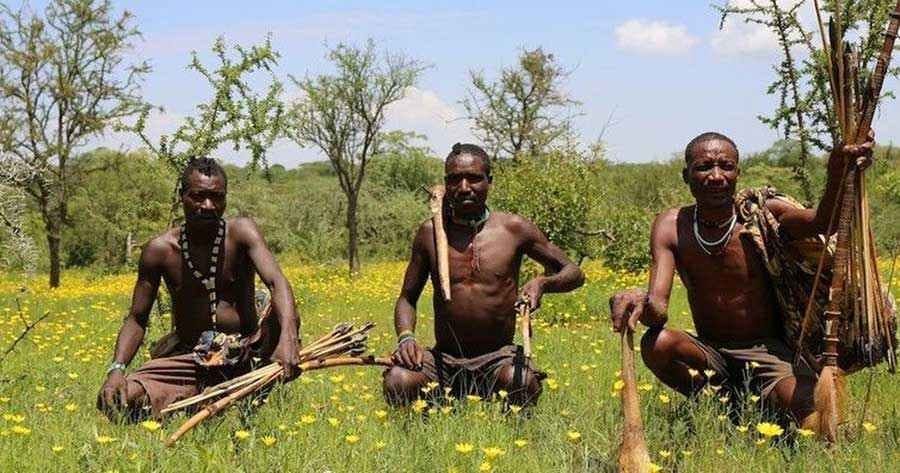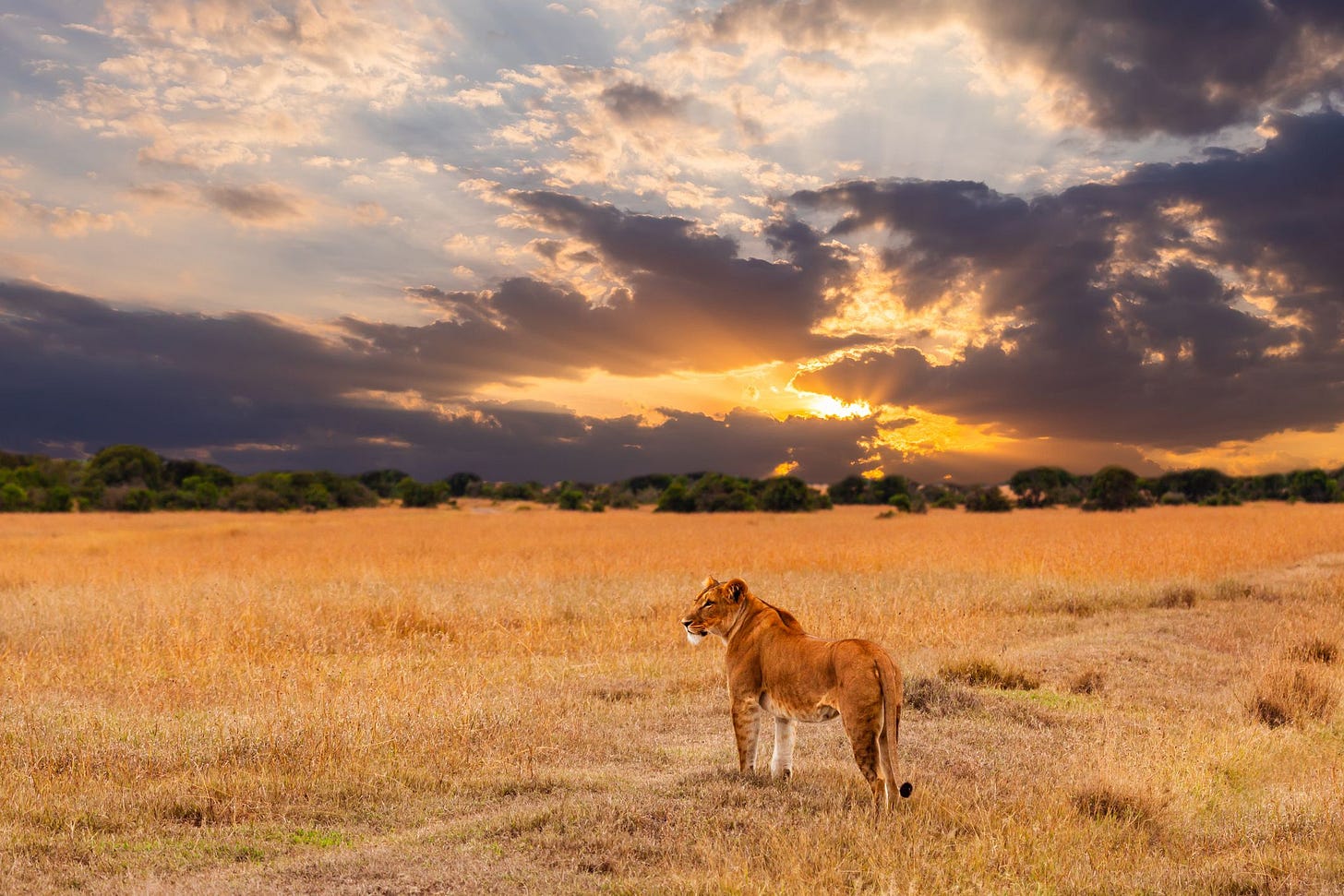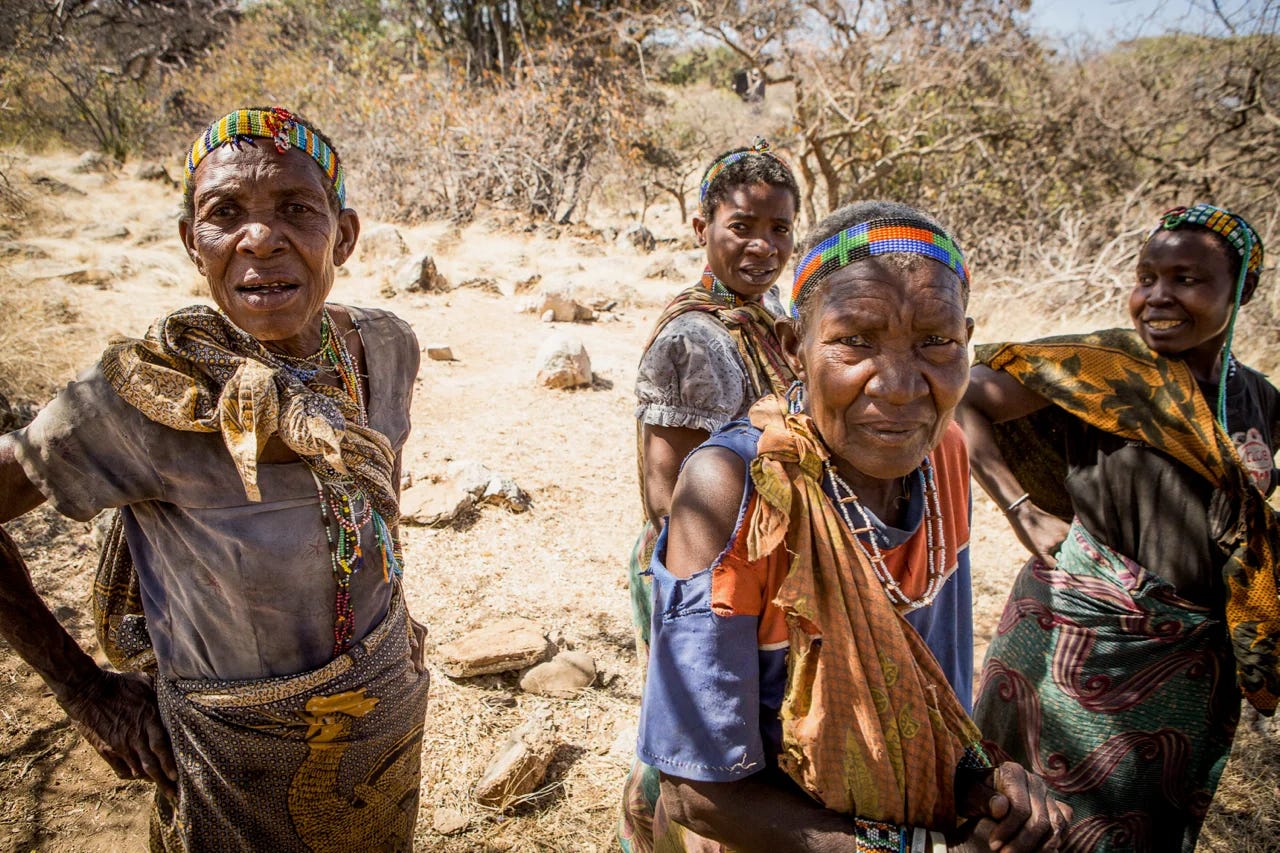In the beginning, we were all Hunters and Gatherers
Hunter-gatherer societies are how almost all of your ancestors lived
This is the fourth part of my series of posts explaining the importance of society types in human history. You might find it more interesting if you read the first, second, and third parts first. This post explains Hunter-Gatherer societies.
Hunter-Gatherer societies are a type of society that produces the majority of its calories from either:
Hunting wild animals (typically done by men)
Gathering wild plants (typically done by women)
Because of the unique characteristics of these types of food, Hunter-Gatherer societies were very different from other types of societies.
See also my other articles on Society Types and related topics:
Why are there such huge variations in income across the globe?
Hunter-Gatherer societies (this article)
Commercial societies (which invented modern progress)
The following is an excerpt from my book From Poverty to Progress: Understanding Humanity’s Greatest Achievement. It is part of a series of excerpts that I am publishing on Substack. You can purchase discounted copies of my book at my website, or pay full prize at Amazon.
You might also be interested in reading other books in my “From Poverty to Progress” book series:
Hunter-Gatherer Societies
The single most important society type in human history is the Hunter-Gatherer society type. For virtually all of our history as a species, humans lived as Hunter-Gatherers. We evolved biologically to adapt ourselves to the needs of surviving and reproducing within that society type.
Human beings evolved from apes that lived in the Tropical Rain Forest biome (see the middle bottom of the following graphic). Grasses as species had long since evolved, but the climate was too warm and wet for them to become the dominant vegetation in any one area.
Like most large mammals, apes lived in very low population densities (at least in comparison to modern humans). Our ape ancestors possessed very little technology beyond sticks.
A little-known fact is that the general trend of global temperate change over the last 55 million years has been cooling and drying. Because of the much warmer temperature, Africa was almost completely covered by Tropical Forests and much of Eurasia. This enabled apes to cover most of Africa and Eurasia.
As the climate cooled and dried 4-6 million years ago, the grasses gradually grew more common in East and South Africa and eventually, they became common enough to dominate entire regions. This marks the birth of the Savanna (or Tropical Grassland) biome.
The Savanna biome in East and South Africa advanced at the expense of the Tropical Rain Forest biome, and early hominids evolved to adapt to the thinning of trees. At some point, key enabling technologies such as the domestication of fire, language, stone tools, and weapons evolved in tandem with early hominids.
This toolkit of technologies enabled the evolution of modern humans as a species, as well as the Hunter-Gatherer society type around 100,000-200,000 years ago. Key technologies enabled Hunter-Gatherer societies to do the following:
Manipulate their environment (using stone tools)
Dig for underground roots, rhizomes, tubers and bulbs (using digging sticks)
Communicate complex ideas with each other (using language)
Safely kill large, dangerous mammals from a distance (using a spear, atlatl, and the bow and arrow)
Extract the maximum amount of nutrition from those mammals with as little work as possible (using fire and cooking)
Hunter-Gatherers Migrate
Hunter-Gatherers originated in the African Savanna, but gradually spread to other eco-regions. As these Hunter-Gatherer societies migrated and encountered new natural environments, they were forced to innovate new technologies to survive. This created new varieties of Hunter-Gatherer societies, each based upon their dominant means of subsistence (i.e. their main diet and how they produced that food).
Hunter-Gatherer societies had access to very limited amounts of energy, so their populations stayed small and bands were widely scattered. The combination of a small base of technology, small population size and low population density meant that the rate of innovation during this period was extremely slow. Despite this, Hunter-Gatherer societies found a way to expand into almost all of the biomes on planet Earth except the open oceans.
As the first Hunter-Gatherer societies evolved, they presumably increased in population. As the local population increased up to the carrying capacity of their local environment given their current technology, sub-bands splintered off and moved into virgin territory. Most likely, the younger members of the groups led these sub-bands once they grew into adulthood. Gradually, generation after generation, each band would fill in every geographical niche within the biome.
This probably continued until Hunter-Gatherer bands reached a major geographical barrier such as an ocean, inland sea, major mountain range or a different biome. When a band reached a different biome, its expansion would have slowed down as they needed time to adapt their subsistence (food acquiring) technologies to the new environment. For example, many of the survival skills and technologies that were highly useful in the Savanna were not particularly useful within Tropical Forests. New skills and technologies had to be innovated.
Most likely these bands remained in the transition zones where the vegetation was a mixture of the old and new biomes. With low population density, Hunter-Gatherers would naturally avoid these new, less productive areas.
But with increasing population density, some bands would be forced to push further into the transition zone so they could survive. The bands living in these transition zones would be under immense pressure to innovate new technologies and skills that would enable them to exploit all of the resources of the transition zone, not just the ones that they were used to.
At some point in time, the adaptations became sufficient for a full transition to the new biome. When this occurred, a rapid expansion of human populations within that biome probably took place. This process continued for tens of thousands of years until all eco-regions that could support Hunter-Gatherer societies were inhabited.
In this history of Hunter-Gatherer societies, one can see many of the trends that enable progress today. Hunter-Gatherers cooperated to solve local problems. In doing this, they innovated new technologies and skills to make, use and repair those technologies. As the technologies became more complex, Hunter-Gatherers were forced to cooperate more closely together. When Hunter-Gatherer bands competed with each other for territory and food resources, then cooperation within the group became even more important.
Hunter-Gatherers Today
History has not been kind to Hunter-Gatherer societies. While they dominated the planet for at least 100,000 years, they have been in full-scale retreat over the most recent 10,000 years. Today they only live in small isolated regions that are of little interest to other societies. Their small population size and relatively simple toolset has left them highly vulnerable to conquest from more complex societies. While this fate is sad, it is difficult to see how it could have ended up any other way.
When viewed over the span of millions of years, we can see that apes gradually evolved genetically, culturally and technologically into Hunter-Gatherer societies. In any one year or even century, the changes would have been so minute that they were undetectable, but over time great changes took place.
So was there any true progress during the hundreds of thousands of years that humans lived in Hunter-Gatherer societies? While new technologies and skills evolved, it is difficult to see the standard of living of the people improving noticeably within the course of one generation.
The fundamental problem was that humans started from a very small technology base, so the possible number of new combinations that would result in useful technologies was very small. In addition, humans were so spread out in the search for food that they could not come together in the dense populations that are necessary to spur innovation. Finally, because Hunter-Gatherer societies were highly mobile and they needed to physically carry all their technology with them, there was a hard ceiling on the amount of technology that could be acquired.
Hunter-Gatherer societies were problem-solving engines, but of a very inefficient kind compared to what came later.
The Legacy of Hunter-Gatherer Societies
Compared to virtually all other peoples, societies that still live as Hunter-Gatherers are impoverished. That is hardly surprising given their very low levels of technology. But even when recent ancestors abandoned the Hunter-Gatherer lifestyle and live in modern societies, they have had trouble succeeding.
While there is very little data on the subject, I can think of no ethnic group whose ancestors lived as Hunter-Gatherers in the year 1500 that are above average in socio-economic status in any nation of the world. To the best of my knowledge, they are all very low in their socio-economic status. Adopting technology and culture alone cannot raise the ancestors of recent Hunter-Gatherers up to the rest of society.
I believe that people living in Hunter-Gatherer societies have evolved genetically, culturally and technologically to survive and reproduce within those societies. Since the means to prosper in those societies is fundamentally different from the means to prosper in modern Industrial societies, they have trouble succeeding in those societies. It has nothing to do with race or inferiority; it has to do with being better adapted to a different environment. And that environment includes both the natural environment and the human environment (i.e. the society type).
To prove that this difference has nothing to do with superiority, think of yourself or some other person living in a modern Industrial society suddenly being transported back into Hunter-Gatherer times. If we lived alone, we would likely die within days or weeks.
If we were lucky enough to be transported into a sympathetic Hunter-Gatherer band, we would at first be as helpless as children. Perhaps after a few months of patient teaching by experienced Hunter-Gatherers, we could begin to contribute to the band in a meaningful way. After a year of learning, we might even be as productive as the other members of the band.
But all the knowledge, skills, and beliefs that help us survive and prosper in modern Industrial societies would be almost useless. We would be forced to learn everything from scratch and would only have a chance to do so if others who were already adapted to that environment were willing and able to teach us.
See also my other articles on Society Types and related topics:
Why are there such huge variations in income across the globe?
Hunter-Gatherer societies (this article)
Commercial societies (which invented modern progress)
If you would like a deeper dive into Hunter-Gatherer societies, then read this summary on my online library of book summaries:
Book Summary: “Lifeways of Hunter-Gatherers” by Robert Kelly













I think your analysis is spot on.